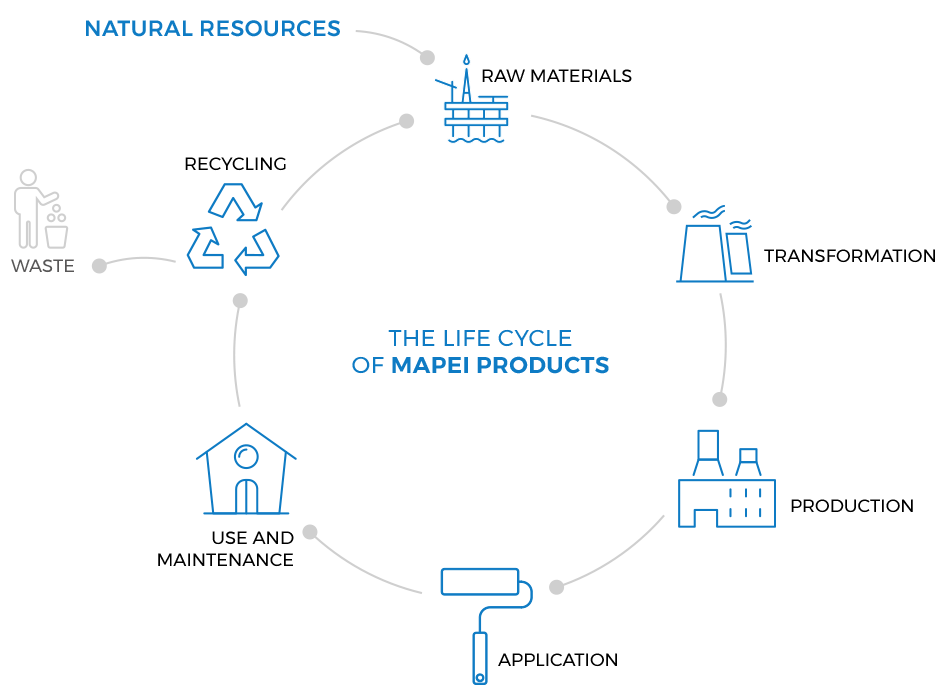
An Environmental Product Declaration is a complete report, prepared according to international standards (such as ISO 14025, EN 15804, etc.), that documents the effects a product has on the environment throughout its entire life cycle, by measuring these effects according to standardised LCA (Life Cycle Assessment) methods.
An analysis of the life cycle of a product, therefore, is an evaluation of the environmental impact of the product during all the various phases of its life: from extraction of the raw materials that make up the formula, to their transport to the production plant, to the production cycle, to its packaging, to waste materials, to transporting the finished product to the distributor and its final disposal.
Products are considered to have numerous effects on the environment: from the most widely known effect of global warming caused by greenhouse gases (Global Warming Potential, known also as Carbon Footprint), up to effects such as eutrophication (anomalous growth of aquatic organisms, such as algae, due to a decrease in the density of aquatic fauna), the reduction in the thickness of the ozone layer, the transformation of pollutants into acidic substances (which then causes acid rain), a reduction in the amount of natural resources, and many more.


An EPD prepared and calculated to cover a particular range of products with similar functions. It can include products from different manufacturers and are usually published by Trade Associations to cover certain categories of product. It contains the average impact on the environment of the products and manufacturers that have taken part in collecting and analysing the relative data.
This type is structured according to chemical composition and covers all products that fall within a certain range of formulations and applications. Since the environmental impact inside a building of one of these aforementioned products is generally very low, a more refined differentiation of the products would not give architects any more significant information due to the enormous complexity of a building system.
Model EPD’s have been developed by FEICA (Association of the European Adhesive and Sealant Industry) and EFCA (European Federation of Concrete Admixtures) according to a “worst case scenario” approach.
EPD’s by FEICA and EFCA are certified and published by the German Program Operator IBU.
